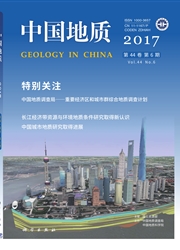

 中文摘要:
中文摘要:
利用卫星遥感影像,结合实地调查和测年结果,对共和盆地层状地貌系统进行了解译、分析。研究表明.共和盆地层状地貌系统由山麓剥蚀面、洪积扇面、盆地面以及黄河阶地面构成.其空间结构、物质组成对发生于早更新世早期的青藏运动C幕和中更新世末期的共和运动反映清晰。青藏运动C幕使青藏高原主夷平面在高原差异性隆升中彻底解体,垂直变形量高达1700m。共和运动使黄河在0.11Ma进入共和盆地.其后黄河平均以3.5mm/a的侵蚀速率下切盆地.同时在盆地边部的山前古冲洪积扇以大致相近的速率被抬升.最终导致高差在2000m左右的层状地貌系统的出现.
 英文摘要:
英文摘要:
Based on the satellite images, combined with field surveys and thermoluminescence dating of Quaternary sediments, the authors explain and analyze the step-like landform system of the Gonghe basin. Study shows that the landform system consists of the piedmont denudation surface, proluvial fan surface, basin surface and terrace surface. Its spatial structure and material composition clearly record the early Early Pleistocene C phase of the Qinghai-Tibet orogeny and late Middle Pleistocene Gonghe orogeny. Phase C of the Qinghai-Tibet orogeny witnessed the disintegration of the main planation surface during the differential uplift of the plateau, with a vertical displacement of as high as 1700 m. The Gonghe orogeny caused the Yellow RAver to enter the Gonghe basin at 0.11 Ma. Since then, substantial down-cutting of the basin surface has continued to the present at an average rate of 3.5 mm/a. At the same time, the piedmont paleo-proluvial fan at the margin of the basin has been elevated at about the same rate. Ultimately, a step-like landform system with a height difference of about 2000 m appeared.
 同期刊论文项目
同期刊论文项目
 同项目期刊论文
同项目期刊论文
 Geochemistry and spatial distribution of late-Paleozoic mafic volcanic rocks in the surrounding area
Geochemistry and spatial distribution of late-Paleozoic mafic volcanic rocks in the surrounding area 期刊信息
期刊信息
